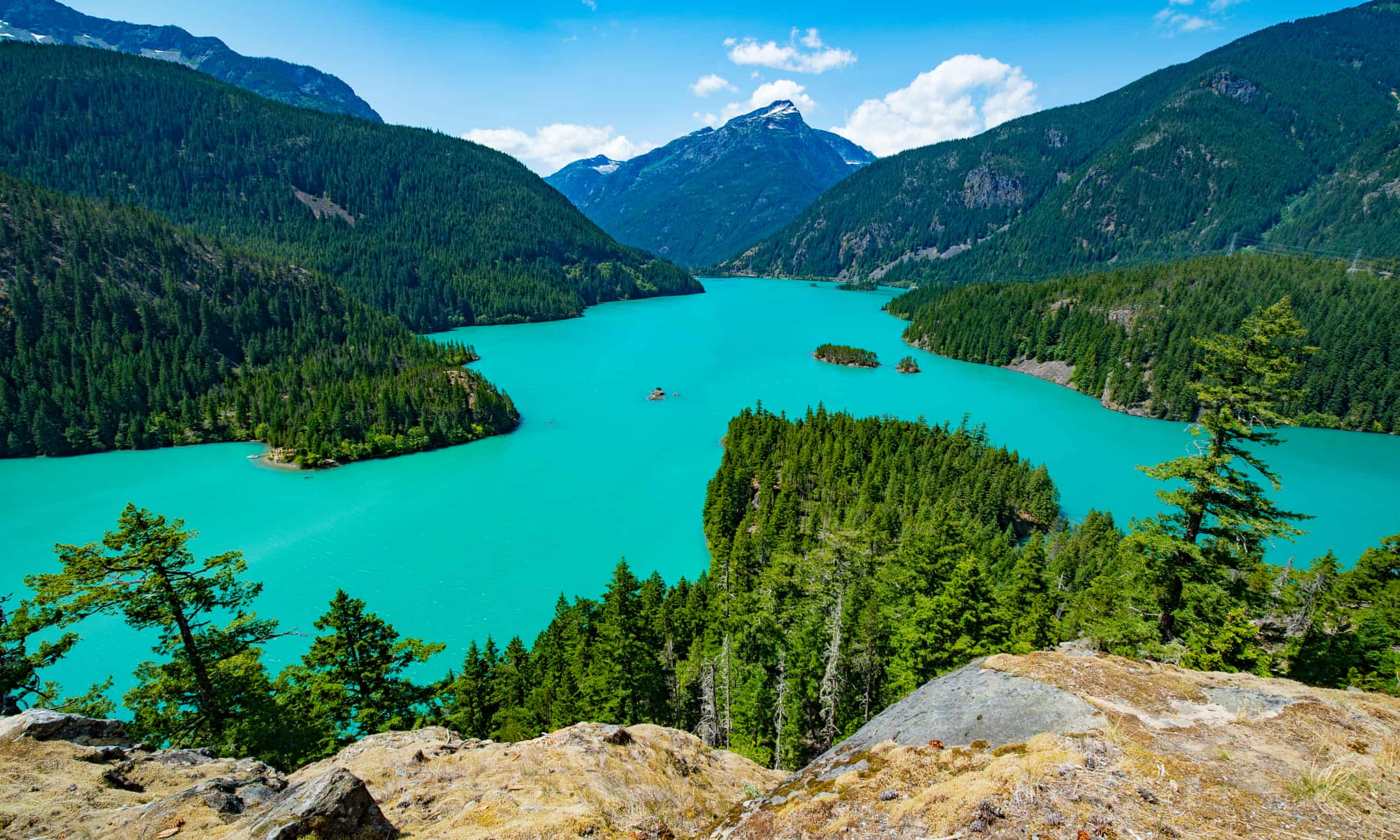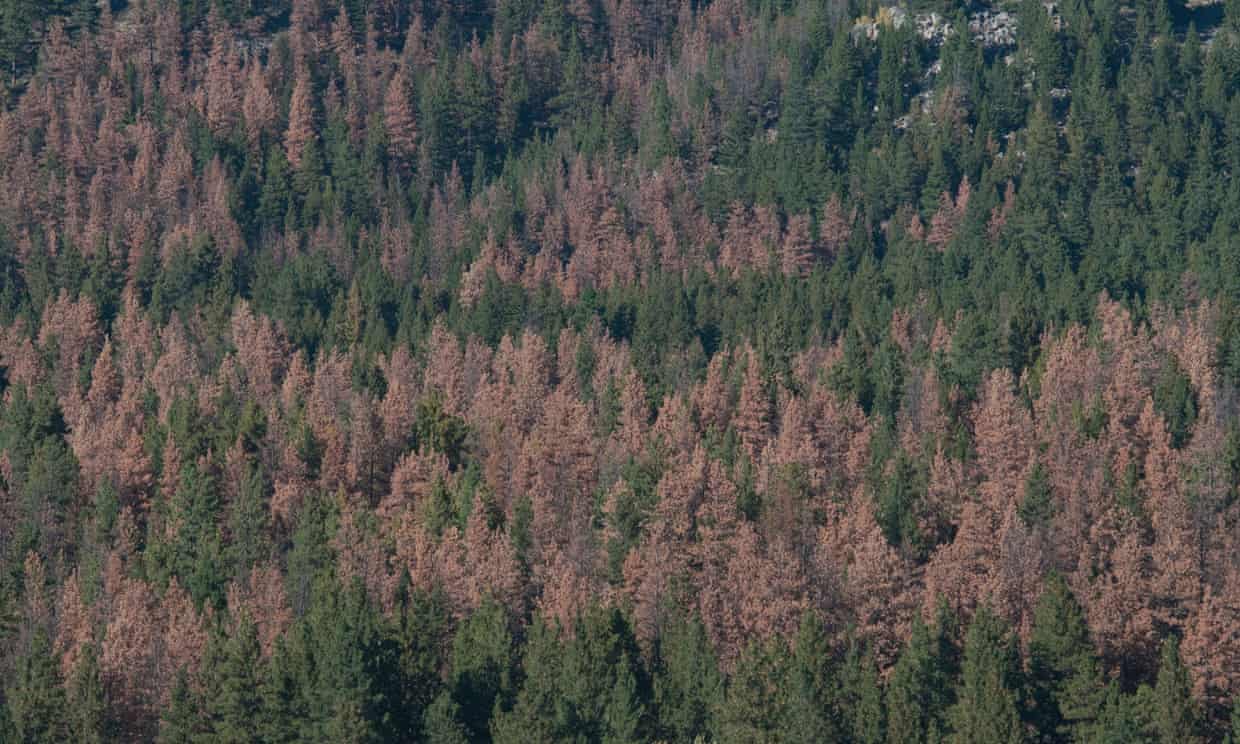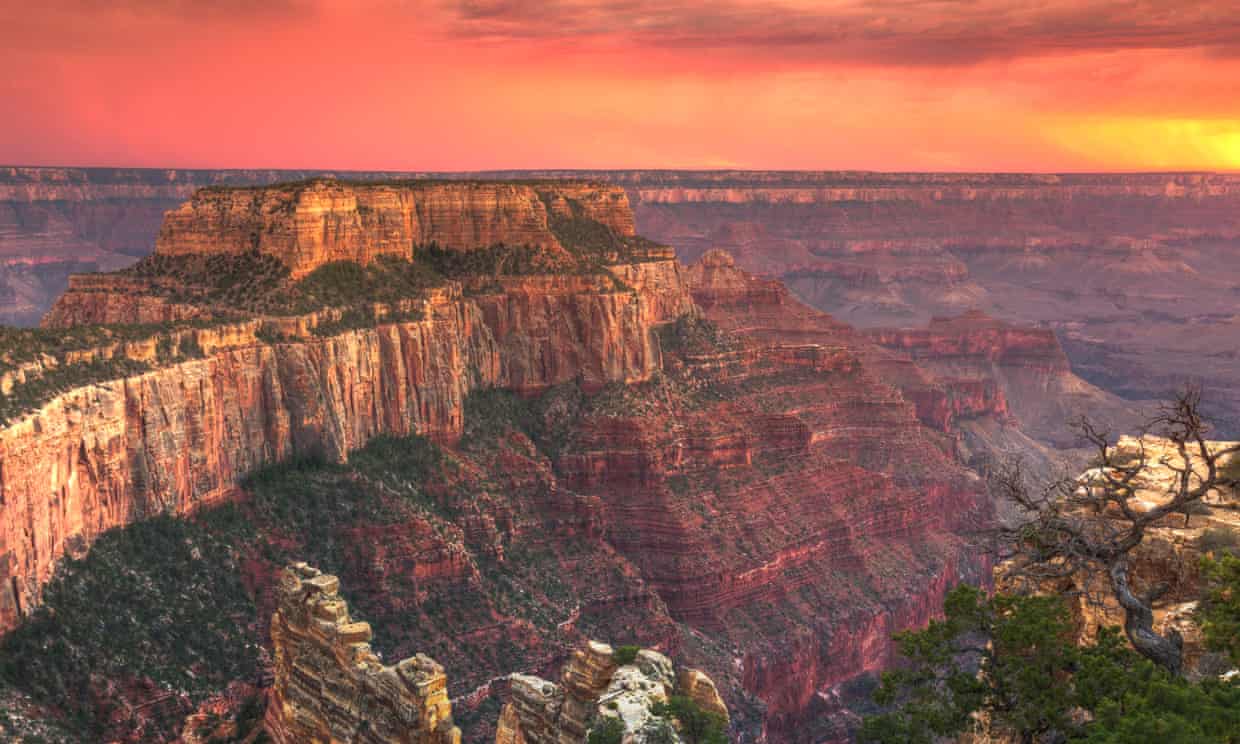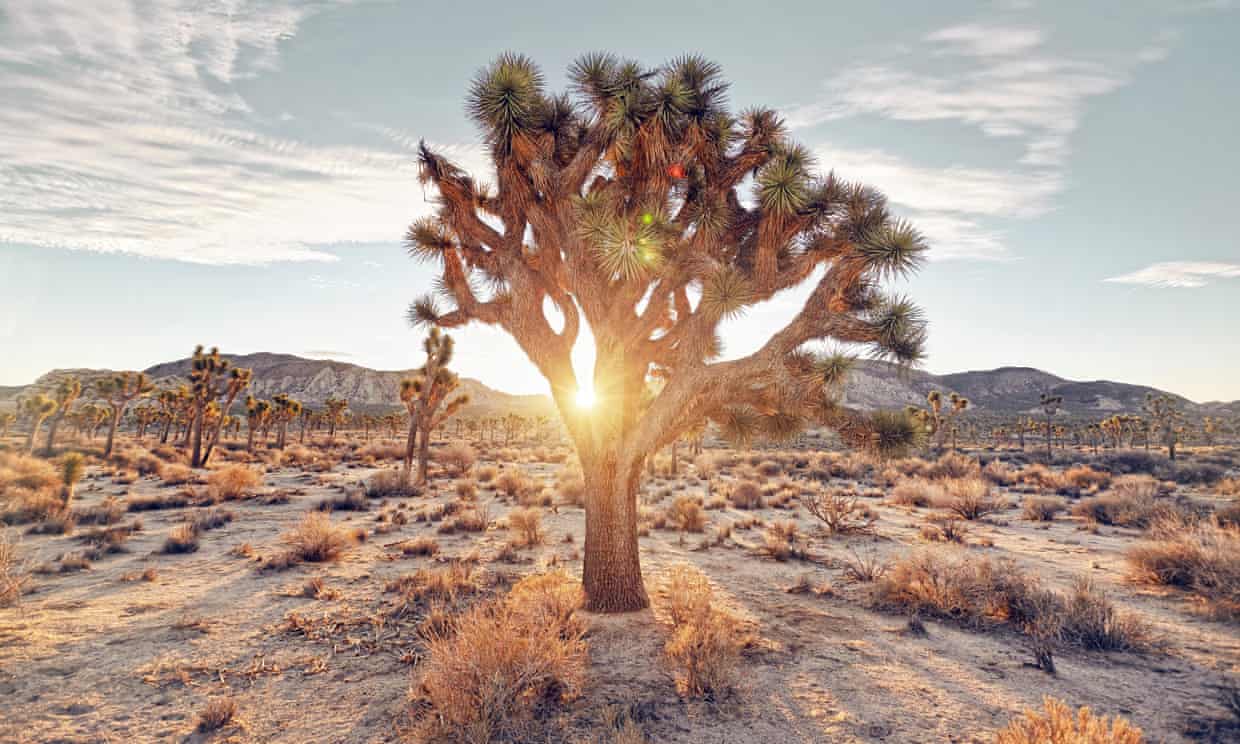
America’s national parks are facing multiple threats, despite being central to the frontier nation’s sense of itself...
Autumn in the North Cascades National Park and soggy clouds cling to the peaks of the mountains that inspired the musings of Beat poets such as Jack Kerouac and Alan Ginsberg 60 years ago. Sitting on a carpet of pine needles in the forest below, protected from the rain by a canopy of vine maple leaves, is a group of 10-year-olds listening to a naturalist hoping to spark a similar love of the outdoors in a new generation.
This is one of 59 national parks which range across the United States, from the depths of the Grand Canyon in Arizona to the turrets of the Rocky Mountains in Colorado. All – plus hundreds of monuments and historic sites – are run by the National Park Service (NPS), which celebrated its centenary last year. The parks were created so that America’s natural wonders would be accessible to everyone, rather than sold off to the highest bidder. Writer Wallace Stegner called them America’s best idea: “Absolutely democratic, they reflect us at our best rather than our worst.”
Jack Kerouac spent the summer of 1956 as a fire lookout atop Desolation Peak in the North Cascades...
It’s easy to agree. Nicknamed America’s Alps, Washington State’s North Cascades is an area of soaring beauty, a wilderness of fire and ice thanks to hundreds of glaciers and dense forest where trees burn in summer blazes. The Pacific Crest Trail – made famous by Cheryl Strayed’s memoir, Wild, and the subsequent film starring Reese Witherspoon – runs through the park. Walking along Thunder Creek one midweek morning, the only sound is rushing water and birdsong. The view is a nature-layered cake of teal water, forested mountain slopes and snowy summits. But it is here that you can also observe the threats facing the parks in their next 100 years. They are fighting a war on three fronts: severe underfunding, climate change and a lack of diversity and youth among their visitors.
Jack Kerouac spent the summer of 1956 as a fire lookout atop Desolation Peak in the North Cascades, surrounded by silence and rocky spires, far from the drink, drugs and distractions of his San Francisco life. He drew on his Cascades experiences in Dharma Bums, Lonesome Traveler and Desolation Angels, in which he wrote: “Those lazy afternoons, when I used to sit, or lie down, on Desolation Peak, sometimes on the alpine grass, hundreds of miles of snow-covered rock all around…” Those views look different today. Climate change is causing the glaciers to melt: their square footage shrank by 20% between 1959 and 2009.
Running with the herd: bison on the prairie below the Grand Teton mountains in Yellowstone. Photograph: Matt Anderson/Getty Images
Saul Weisberg, executive director of the North Cascades Institute, an environmental educational organisation, said that the difference between photos from September – when the seasonal snow is gone – in the 1950s and today was, “Incredibly dramatic. Snow is melting back more and more and now you see a lot more rock when you look at the mountains.”
Climate change is killing trees, threatening birds and mammals, and leading to devastating wildfires across the 85m acres run by the NPS. Patrick Gonzalez, the principal climate-change scientist at the NPS, told me about rising sea levels (there’s been a 22cm rise across the bay at Golden Gate National Recreation Area, California, since 1954); high ocean temperatures bleaching and killing coral in Virgin Islands National Park; and major vegetation types and wildlife moving upwards.
Yosemite saw subalpine forests moving up into subalpine meadows over the last century and small mammals, including mice and ground squirrels, shifting 500m uphill. “As temperatures warm,” he said, “things on higher elevations get warmer and things on lower elevations move up.” Bark beetles, once killed by cold winters, are now surviving and wreaking havoc with trees. “You go to Rocky Mountains, Yellowstone… hillsides formerly covered in a green canopy of trees are now just rust-coloured areas.”
If no action is taken, the glaciers of Glacier National Park may melt away; Joshua trees could die out in the park that bears their name; bison may disappear from Yellowstone; and the ancient cliff dwellings in Mesa Verde in Colorado could crumble away.
The NPS is tackling the issue in two ways, said Gonzalez, first by cutting emissions from its own operations by 35% by 2020; and secondly, by adapting its management of the parks to cope with how things might look under climate change rather than trying to maintain them as pictures of the past. “With full implementation of the Paris climate agreement and further improvements in energy efficiency and sustainability we can avoid the most drastic effects of climate change,” he said.
Digging deep: the Grand Canyon, one of 59 national parks in America. Photograph: Michele Falzone/Getty Images
However, Donald Trump has called climate change a “hoax”. After the election, he conceded there was “some connectivity” between human activity and climate change and wavered on a previous vow to “cancel” the Paris agreement. Yet several of his picks for key posts in his administration are climate science sceptics, including Scott Pruitt and Ryan Zinke.
The ravages of climate change exacerbate another peril facing the parks: lack of money. There is an $11.9bn maintenance backlog and the system is understaffed, with 10% fewer employees than five years ago. Roads and bridges are crumbling, trails need repairing and campgrounds are neglected.
The 140-mile Yellowstone loop road was designed a century ago for horse-drawn carriages and requires a $1bn rebuild. The adobe Old Santa Fe Trail building needs $2m-worth of repairs to walls damaged by water and pests.
The North Cascades, which became a National Park in 1968, has a $21.8m to-do list. “All of it needs attention,” said Denise Shultz, of the NPS. “National parks are like mini cities with water-treatment plants, electrical grids to take care of and bridges. There are over 300 miles of trails in the park. It’s like housekeeping. It never gets finished.”
Although wear and tear is visible – at the amphitheatre at Newhalem campground in the North Cascades, you can see the wooden stage is rotting and the asphalt is buckling – visitors are shielded from much of it.
“Largely, the parks service prioritises projects that improve and maintain the visitor experience and ensures the safety of visitors,” said John Garder, the budget director at the National Parks Conservation Association that lobbies on behalf of the parks. “But there are safety concerns, such as old wiring that has to be replaced. There are major multi-million dollar issues with water and waste water. If those ageing systems aren’t dealt with then it will raise questions about whether the parks are still able to accommodate visitors.”
The bulk of the parks’ $3.1bn budget comes from Congress with the rest from entrance charges, philanthropy and fees paid by hotels, restaurants and other businesses operating on the land. But Congress’s embracement of austerity after the recession saw the NPS’s purse strings pulled ever tighter, the annual amount received falling 8% from 2005 to 2014 after adjusting for inflation.
Setting sun: climate change means the Joshua trees that gave the national park its name could die out. Photograph: James O'Neil/Getty Images
Half of the $11.9bn repair list is transportation infrastructure – roads, bridges, car parks and the like. Money for this is earmarked for the NPS in a transportation bill passed by Congress and has stood at $240m annually for the past few years. Congress has approved an increase totalling $220m over the next five years. “That investment should be hundreds of millions more,” said Garder.
The non-transportation part of the backlog is funded by Congress through the park operations account (for smaller projects and day-to-day maintenance) and the construction account (for major repairs).
Garder said both had been insufficient for years and the construction account, after controlling for inflation, was “scarcely half of what it was 10 years ago”.
The parks belong to everyone, but not everyone is going. Most are white and middle-aged...
His verdict on a 9% increase given to the NPS by Congress to mark the centenary? “A considerable increase, yet much more needs to be done.” He hopes that Trump’s promise to invest in infrastructure will cover the parks’ repairs, too. This would create construction jobs and help tourism, he said. The parks are vital to local economies: for every $1 invested, $10 in economic activity is generated and they fund 300,000 private sector jobs in terms of hotels, restaurants, souvenir shops and more.
What the national parks are not short of is visitors – a record 307m in 2015, 14m up on the previous year, meaning more wear and tear that stretches funds further. The top draws were Great Smoky Mountain National Park on the Tennessee/North Carolina border, with 10.7m visitors; Arizona’s Grand Canyon, with 5.5m; and Colorado’s Rocky Mountain National Park and California’s Yosemite, both with 4.15m.
But while the national parks belong to everyone, not everyone is going. Those who do are mainly white, middle-class and well into middle-age. The challenge is how to attract a younger crowd to ensure support for protection and funding of the parks in the future.
The NPS is trying to “tell a more inclusive story” of America by increasing the number of sites and monuments honouring African- American, Latino, Asian-American, Pacific Islander, LGBTQ and women’s history.

To tear millennials away from indoor digital distractions, the Find Your Park campaign is marketing the parks, ironically, via social media. Meanwhile, Every Kid in a Park gives all 10-year-olds a free family pass (many parks charge an entrance fee).
Nor do the parks’ staff reflect the visitors they want to attract in terms of gender, age or race. Around 80% are white, 63% male and 50% over the age of 46. Recent revelations of sexual harassment and bullying in the workforce haven’t helped its image. Internships and volunteer opportunities are being offered to encourage those who might not have thought of working for the NPS to apply for jobs.
In the North Cascades, rangers work with local Hispanic communities. “We bring school kids out into the parks and give them experience of doing things that are fun,” said Denise Shultz, “but which many of us take for granted, like camping and hiking, and learning how to identify birds and plants.”
Some people fear the outdoors, she said, and it was about finding out how to make them comfortable. She recalled taking a group of urban Latino female bloggers to the Grand Canyon to kayak and hike. She asked what had worried them most. “One said: ‘I am a full- figured Latino woman and the thing that scared me the most was shopping at REI [an outdoor-gear retailer].’ She’d thought it was a store for skinny white people and was afraid nothing would fit and she wouldn’t know what all the equipment was for. It can be a whole different language and culture for people. She said she had a great experience in the store when she actually went.”
The NPS boosts its efforts by providing a ranger to help with Mountain School at the non-profit North Cascades Institute.
At the institute’s learning centre on the shores of Lake Diablo, the children who were listening to the naturalist in the forest in the afternoon join 70 classmates in the evening to inspect the skulls of wolves and black bears with ranger Anna Mateljak, before singing around a campfire.
Saul Weisberg is passionate about the power of education to effect change, and gave up being a ranger to co-found the institute 30 years ago. “It was at the height of fights over the spotted owl [environmentalists blamed logging for destroying their habitat] and timber wars. There were demonstrations, court fights, direct action, tree sit-ins. It seemed like no one was using education as a tool of conservation.”
As well as adult and graduate courses, and weekend getaways for families, it runs leadership camps for high school pupils with no experience of the outdoors, and the Mountain School where children stay for three days of hands-on activities.
Weisberg, also a poet, was drawn to the Cascades after reading Kerouac at high school in Ohio. He still indulges his passion by running a “Beats on the Peaks” course, which includes a hike up Desolation Peak to the lookout. He’s not sure the Beat poets have the same pull for today’s teenagers, yet at a time when the national parks’ future is unpredictable, perhaps Kerouac’s advice is still relevant: “Because in the end, you won’t remember the time you spent working in the office or mowing the lawn. Climb that goddamn mountain!”
by Lucy Rock

https://twitter.com/lucyjrock?lang=en
source: https://www.theguardian.com/us
original story HERE
To help do something about the climate change and global warming emergency, click here.
Sign up for our free Global Warming Blog by clicking here. (In your email, you will receive critical news, research, and the warning signs for the next global warming disaster.)
To share this blog post: Go to the Share button to the left below.




Be the first to comment
Sign in with